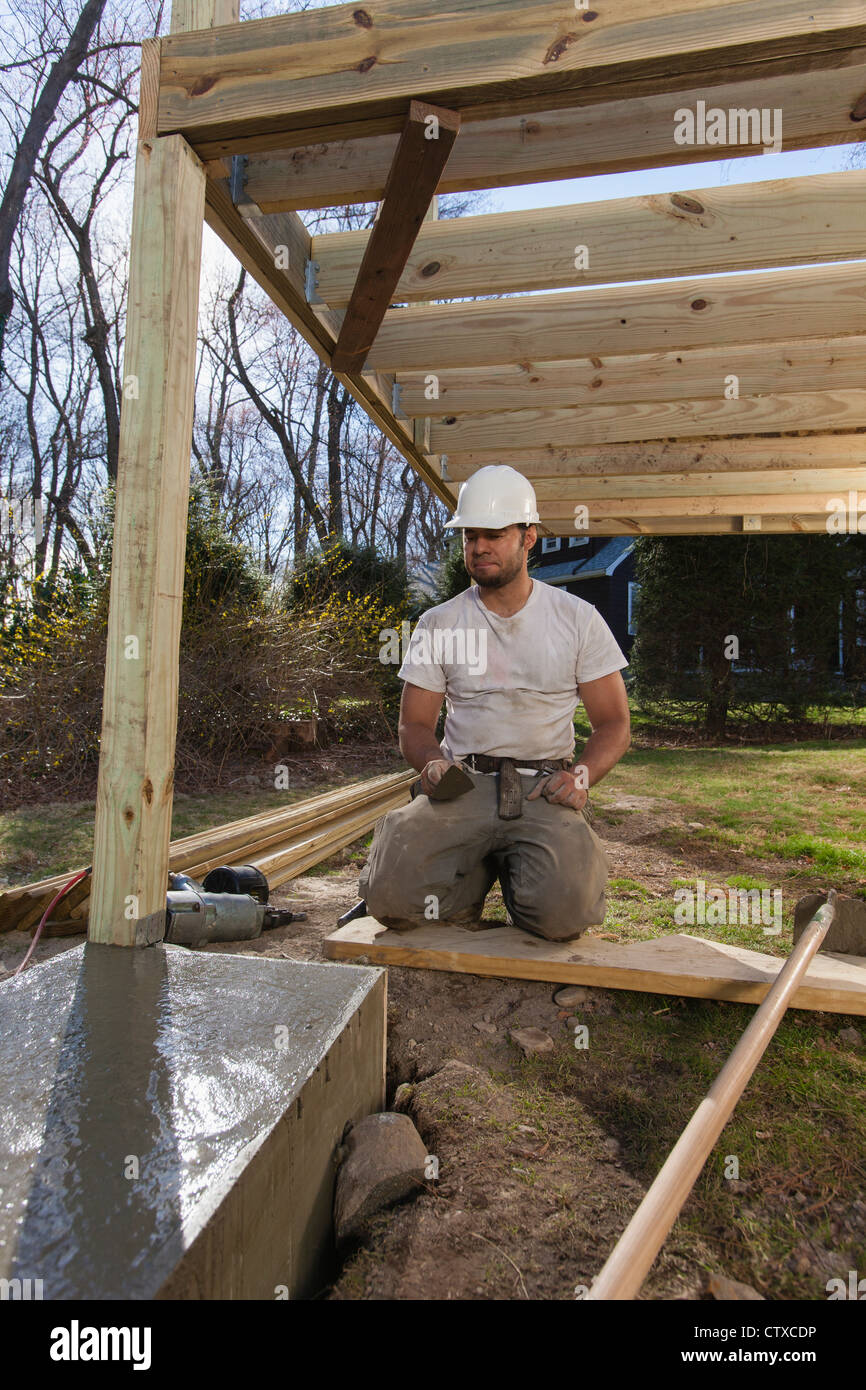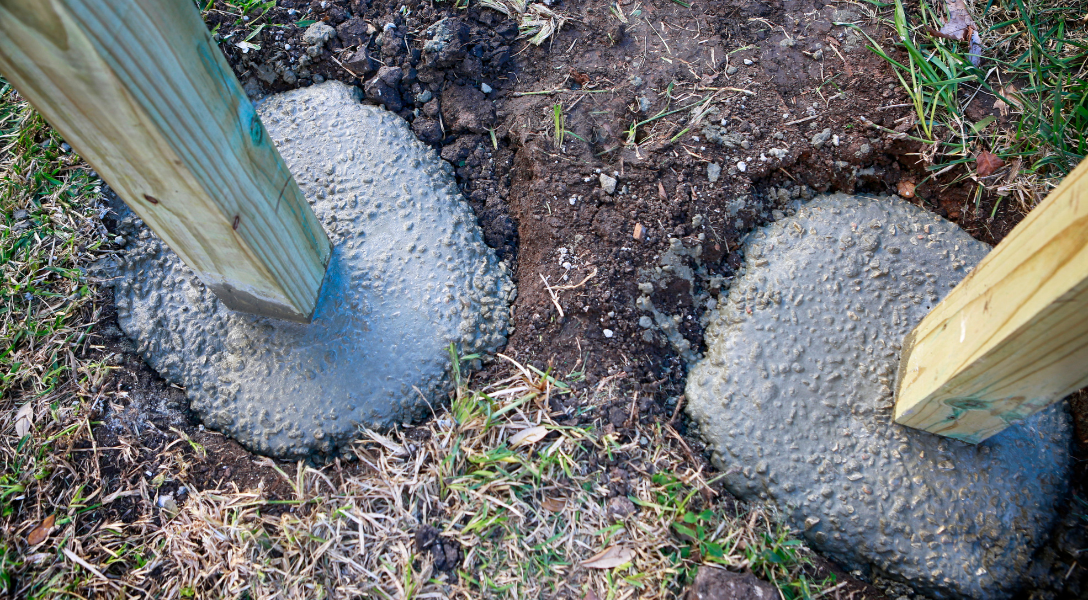Deck Footings Introduced: Recognizing the Trick Elements of a Dependable Deck Structure
Choosing the Right Deck Footings for Security and Longevity
When it involves developing a deck, one of the most essential choices you will certainly make is choosing the right grounds for security and resilience. The longevity and safety and security of your deck depend heavily on the kind of grounds you pick, as they give the vital support and security to hold up against the test of time. With a myriad of options readily available, it can be overwhelming to identify which grounds are best matched for your specific demands. In this conversation, we will explore the numerous kinds of deck grounds, take into consideration the essential factors to evaluate when deciding, and dig right into the pros and cons of various options. By the end, you will certainly have a more clear understanding of the options handy and be better equipped to make an educated decision for your deck task.
Sorts Of Deck Footings
These grounds consist of a cylindrical opening filled with concrete, which gives a strong foundation for the deck articles. Concrete pier grounds are relatively simple to install and provide excellent security, making them a prominent choice for numerous deck jobs.
These footings are installed by screwing them into the ground, which creates a safe and secure structure for the deck. They also allow for easy change and progressing of the deck if needed.
Alternatively, some home builders choose for precast concrete grounds. These footings are made from sturdy concrete and come in different sizes and shapes to suit different deck layouts. Precast concrete footings are convenient to install and give a secure base for the deck structure.
Finally, another option is the post-in-anchor footing system. This type of footing entails driving a steel anchor right into the ground and affixing it to the deck blog post. It supplies adaptability in terms of placing the deck articles and appropriates for decks with light-weight structures.
When picking the ideal sort of deck ground, it is necessary to consider aspects such as soil problems, deck load, and regional building ordinance (Deck Footings). Consulting with an expert contractor or structural designer can help ensure the appropriate ground is chosen for a risk-free and secure deck
Variables to Consider When Selecting Grounds
When selecting the suitable grounds for a deck, it is crucial to very carefully take into consideration various elements such as dirt problems, deck load, and adherence to local structure codes. These variables play a considerable duty in ensuring the stability and longevity of the deck structure.
The type of soil on which the deck will certainly be developed identifies the kind of grounds required. On the other hand, decks developed on clay or large dirts may call for grounds that can accommodate the dirt's propensity to broaden and agreement.
One more essential factor is the deck load. The weight of the deck, consisting of the products used and any possible real-time tons such as furniture or gatherings, have to be thought about when choosing grounds. The grounds need to be designed to birth the weight of the deck and disperse it uniformly to avoid any type of structural concerns or failings.
Finally, adherence to local structure codes is extremely important. Building codes vary from area to area, and it is necessary to abide by the particular requirements set by the regional authorities. Deck Footings. These codes ensure that the deck is constructed securely and satisfies the required standards for architectural honesty and load-bearing ability
Concrete Grounds: Benefits And Drawbacks

When used as the structure for a deck,Concrete grounds use numerous benefits and disadvantages. On the silver lining, concrete grounds give excellent stability and toughness. Concrete is a rigid and strong material that can sustain hefty lots and endure different climate condition. It also has a long life expectancy, making it a trusted selection for long-term use.
An additional benefit of concrete grounds is their convenience. They can be poured right into various sizes and shapes to suit numerous deck styles and setups. Concrete footings can be personalized to fit the particular requirements and requirements of the deck structure.
However, there are also some downsides to making use of concrete grounds. One major drawback is the cost and labor involved in their installment. Concrete grounds need excavation and commonly require the aid of hefty machinery. This can enhance the overall price of the deck task and may require specialist aid.

Helical Piers Vs. Sonotubes: Which Is Better?
In taking into consideration the foundation options for a deck, the comparison between original site helical piers and sonotubes is essential in identifying the superior choice. They are turned right into the ground utilizing hydraulic machinery, providing a long lasting and steady foundation for the deck.
The helical plates on the piers produce a strong grasp with the soil, preventing any kind of motion or shifting of the deck. Sonotubes, on the various other hand, depend exclusively on the concrete loading for security, which may not offer the exact same degree of stamina and resistance.
In regards to installation, helical piers are fairly easier and faster to set up contrasted to sonotubes. The hydraulic machinery utilized to turn the piers into the ground makes sure a reliable and click for more quick procedure. Sonotubes, on the various other hand, require excavating openings and pouring concrete, which can be labor-intensive and time-consuming.
Furthermore, helical piers are an even more versatile option. If needed, they can be made use of in various soil problems and can be changed or enhanced. Sonotubes, on the various other hand, may need added support, such as rebar, in specific dirt problems or areas with high lots requirements.
Selecting the Right Footings for Your Deck's Measurements
For optimum architectural integrity, it is necessary to thoroughly choose the proper grounds that straighten with the measurements of your deck. The measurements of your deck, including its elevation, size, and size, play a substantial role in determining the type and size of footings required.
When selecting footings for your deck, it is very important to think about the load-bearing capability of the soil. The weight of the deck, combined with the weight of any furniture or people on it, puts in a considerable pressure on the footings (Deck Footings). It is essential to choose footings that can adequately support this weight without sinking or shifting over time.
The dimension and form of the footings should also be considered. Larger decks with greater dimensions call for bigger footings to provide enough security and support. The form of the footings, whether they are square or rounded, depends upon their website the design and layout of the deck. In addition, the depth at which the grounds are set up ought to be determined based upon the frost line in your region to avoid any kind of heaving or changing because of freezing temperature levels.
Verdict
In conclusion, selecting the appropriate deck footings is critical for guaranteeing security and sturdiness. Factors such as the kind of footings, the deck's measurements, and the pros and cons of different alternatives should be taken into consideration.
These grounds consist of a round opening loaded with concrete, which offers a strong structure for the deck articles. Concrete pier footings are relatively simple to mount and offer outstanding stability, making them a preferred selection for several deck projects.
Precast concrete footings are convenient to install and offer a stable base for the deck structure.
It offers flexibility in terms of positioning the deck posts and is suitable for decks with light-weight frameworks.
Concrete grounds use a number of advantages and drawbacks when used as the foundation for a deck.